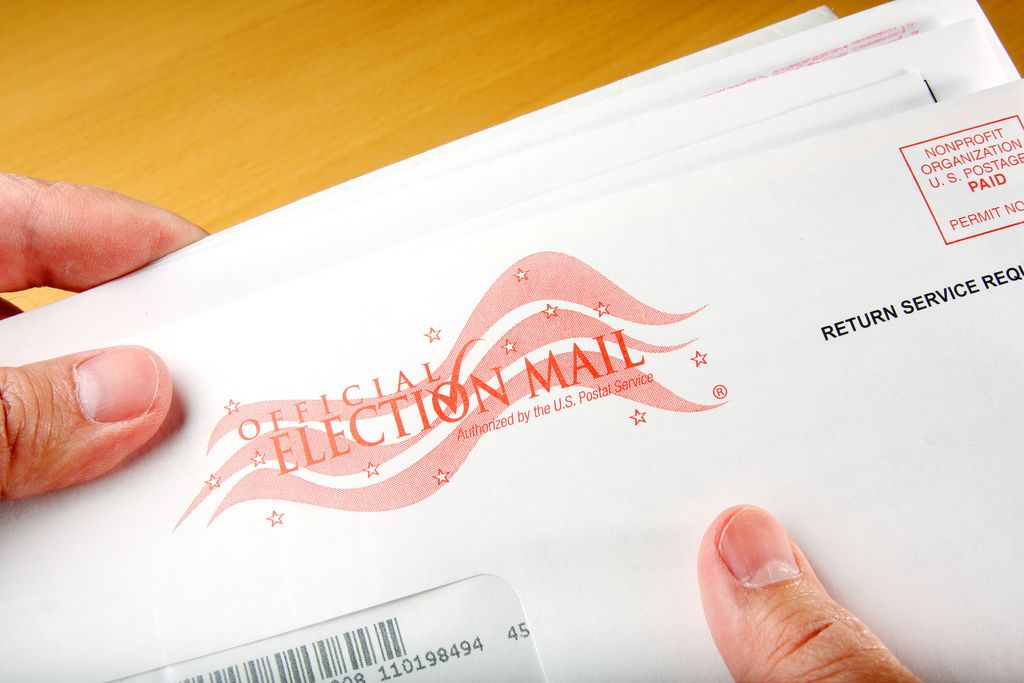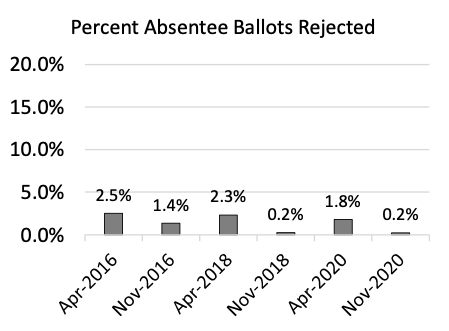
Dan O’Donnell dives into new data from the Wisconsin Elections Commission that shows a stunning anomaly in the rejection rate of absentee ballots this November.
February 3, 2021
Perspective by Dan O’Donnell
Calling into question any aspect of November’s presidential election is a dangerous proposition these days. One is liable to be banned from social media or blamed for a riot at the U.S. Capitol even for suggesting that there might be irregularities that warrant further investigation.
It is, however, far from conspiracy-mongering to accept the reality that those in charge of administering state elections here in Wisconsin put their thumb on the scales at every conceivable opportunity. The Wisconsin Elections Commission (WEC) violated state law by refusing to remove 234,000 names from the voter rolls and by keeping both Kanye West and the Green Party off the ballot so that they could not serve as spoilers for eventual winner Joe Biden.
Milwaukee and Dane County clerks violated state law by telling voters that they could claim indefinite confinement (and thus avoid voter ID requirements) even if they themselves were not actually confined to their homes. The City of Madison violated state law by holding a ballot harvesting event (for which the Biden campaign actually advertised) in every one of its city parks.
Now it seems likely that elections officials across the state refused to reject ballots that they normally would have (and probably legally should have). The WEC’s newly released Election Data Report reveals a staggering anomaly that is nearly impossible to otherwise explain: Despite a massive increase in the use of mail-in voting this November, the percentage of ballots that were rejected dropped to nearly zero.
Just 4,270 absentee ballots out of 1,969,274 cast were rejected—a rate of 0.2%. This defies both logic and common sense. In November’s presidential election, there were roughly twice as many absentee ballots cast as in the spring 2016 election, yet in that election four years ago the rejection rate was 2.5%. If far more people were casting absentee ballots (and presumably casting them for the first time), it would stand to reason that the number of mistakes which cause ballots to be rejected would increase as well.

Instead, those mistakes all but vanished. An infinitesimal 0.07% of ballots (1,434 in total) were rejected because of insufficient ballot certification. An even smaller 0.05% (1,045 total) were rejected because they were received after polls closed. And a microscopic 0.002% (just 42 total) were rejected because the ballot envelope was somehow compromised.
This is nearly impossible to explain, especially since the ballot rejection rate was 1.8% just seven months earlier in Wisconsin’s spring election, when a then-record 1,101,474 absentee ballots were cast. Despite a 78% increase in the number of absentee ballots cast in November, there was a 78% decrease in the number of ballots that were rejected.
Did hundreds of thousands of Wisconsinites suddenly figure out how to correctly fill out their ballots? Or was there a concerted effort to count as many ballots as possible without regard to whether they were correctly filled out?
The evidence points toward the latter. The ballot rejection rate in the April 2016 presidential primary was 2.5% with a 1.4% rejection rate the following November even though there were far fewer absentee ballots returned than in the 2020 presidential election cycle. The April 2020 rejection rate was well within the normal range at 1.8%, but then it suddenly dipped to a minuscule 0.2%.
Interestingly enough, in the November 2018 gubernatorial election—which was also dogged by allegations of fraud following a sudden influx of absentee votes in Milwaukee that propelled Governor Tony Evers past Scott Walker—the absentee ballot rejection rate suddenly dropped to 0.2%. What exactly would be the odds that ballots suddenly stopped getting rejected in the two statewide races in which unpopular Republicans (Walker and Donald Trump) were on the ballot and both lost because of huge increases in absentee voting?
Given that the Wisconsin Elections Commission has since 2016 been unlawfully telling local clerks to fix problematic ballots instead of returning them to voters as state statutes require, it seems as though it has been WEC policy (unlawful though it may be) to get as many questionable ballots counted as possible. This, however, doesn’t explain the sudden and dramatic dips in ballot rejection rates only in the 2018 gubernatorial and 2020 presidential elections.
Either voters somehow figured out ballot return rules exceptionally well only in those two races or clerks and poll workers had a concerted effort to reject as few ballots as possible in an unlawful attempt at aiding Democrat challengers in their bid to unseat Republican incumbents whom the clerks and poll workers despised.
Either way, this stunningly low rejection rate with a record number of mail-in ballots demands and immediate and thorough investigation.
